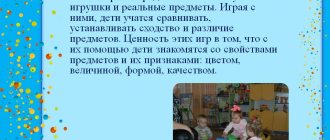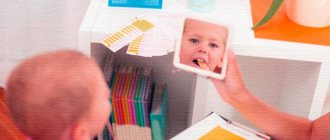Recommendations for the development of coherent speech
To improve coherent speech, children aged 6-7 years are asked to compose a descriptive story based on the picture; come up with a fairy tale or story; finish the sentence for the adult. At the beginning of the work, adults can help with guiding questions or make a plan for the story. Older preschoolers can be given short stories to retell on their own; stage theatrical performances.
Adults should encourage children to write their own stories. It is necessary to be interested in their opinions more often, to ask more questions about the world around them. Role-playing games are the most effective for the development of coherent speech, because they also contribute to the development of intonation expressiveness and improve diction. The better developed coherent speech, the better the communicative function is realized.
All of the tasks described above help form the basis for successfully mastering reading and writing skills. They are preventive measures to prevent violations of written speech. Also, if a child’s sound pronunciation is impaired, then it is necessary to correct it, because it affects all components of speech development.
All speech games for children 6-7 years old should be selected in accordance with their individual characteristics. Therefore, before conducting them, it is recommended to conduct speech therapy diagnostics in order to determine the level of speech development and select the most effective exercises for educational work.
Exercises for syllable structure
Working with syllables is another area of work with children of this age. This is both the basis for improving sound-letter analysis and an important component of successful literacy learning. In this block, children are taught:
- divide a word into syllables based on the number of vowels;
- by rearranging syllables to form new words;
- choose words according to the given number of syllables.
Before you begin completing tasks, you need to do some preparatory work. The child must have formed the concept of “syllable”; he must have basic skills in sound-letter analysis. Then the exercises described below will be effective and will not cause much difficulty.
Sound-letter analysis and syllable structure are closely interrelated. Therefore, on such tasks, both of these directions are worked out in parallel, also expanding and clarifying the vocabulary.
"Say it the other way around"
In this game, word formation skills are practiced by rearranging sounds, namely hard to soft and vice versa. The adult first shows an example of how to perform the exercise (NA-NYA, LA-LA, etc.), and then the child does it independently. You need to select syllables with sounds whose pronunciation is not impaired.
“Name a new syllable”
This is a task to develop auditory attention. The child is given pairs of words that differ from each other by an additional syllable. We need to find and name it. It can be located anywhere in a word.
"Verbal Confusion"
The main goal is to work with syllables and enrich the vocabulary. To carry it out, you will need visual material - pictures depicting objects. The child, looking at the cards, must “unravel” the word. An adult tells him a word with rearranged syllables, and he must not only choose the picture, but also form the syllables correctly.
Exercises to enrich vocabulary and correct grammatical structure
In 6-7 year old children, speech is practically no different from the speech of an adult. They can easily talk about a subject they know, use more clarifying words, and give detailed answers. With the improvement of coherent speech, the development of the grammatical structure of speech also occurs.
Didactic games are aimed at clarifying existing concepts, expanding vocabulary and consolidating acquired grammatical skills, such as word formation and agreement. In addition to nouns and adjectives, in classes with older preschoolers they practice verbal vocabulary, numerals, adverbs and pronouns.
"Who can name more"
In addition to expanding vocabulary and strengthening the ability to generalize, training of motor skills and coordination of movements is needed. Children are asked to name as many words as possible that belong to a certain category. The adult throws the ball - the child says the word.
"Tender name"
During this game, the skill of suffixing words is put into practice. During classes, visual material is used - pictures or toys. The adult says that this object can be large or small. The child needs to name him affectionately, adding a suffix.
"Introducing Antonyms"
An adult shows pictures that depict words with opposite meanings. The child’s task is to choose the right antonyms. You can complicate this task if you use not only nouns and adjectives, but also verbs.
“Whose is this?”
This task is aimed at consolidating the use of possessive adjectives in the child’s active speech. It is best to start education from the names of animals. Children are shown matching images and need to answer the questions: “Whose is this, whose is this?”
"Name the action"
During this game, the teacher teaches children to select an action for an object and name the appropriate verb. Since this exercise requires a ball, motor skills are also improved. The adult throws the ball and names a noun, the child must respond with a suitable verb. For example, a doctor treats, a teacher teaches, etc.
"How many items"
By completing this task, the child strengthens the skill of counting and agreeing between nouns and numerals. Show pictures with different numbers of objects. The preschooler counts them, naming the numerals paired with a noun (one tomato - two tomatoes, three tomatoes, etc.).





